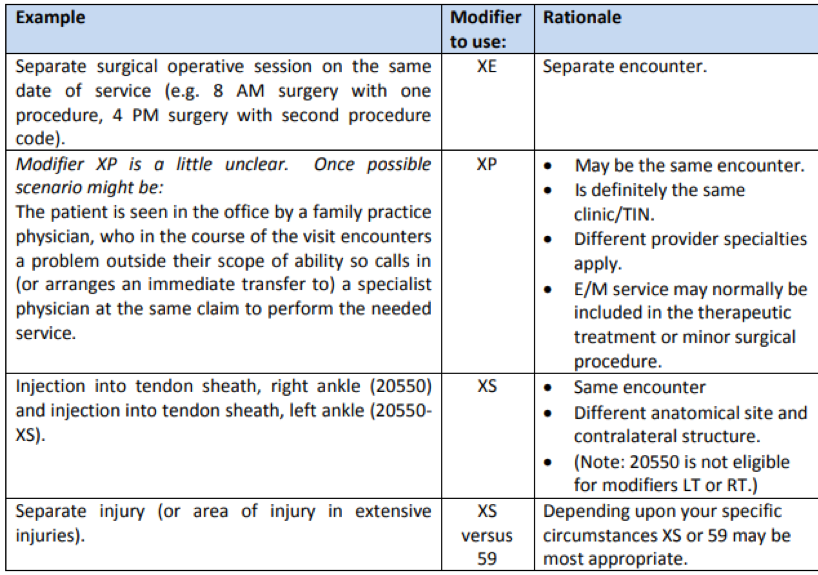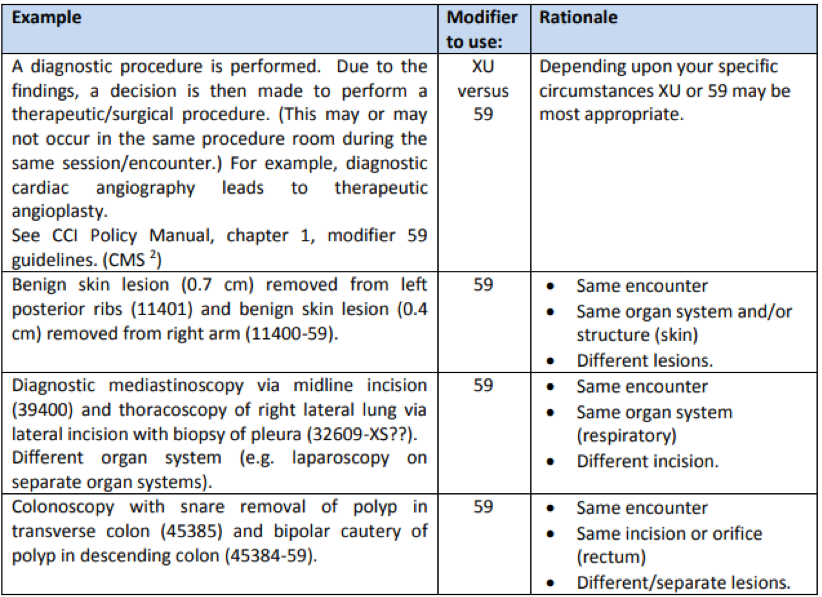Proper modifier usage can be one of the biggest hurdles to filing a clean claim. Modifier 59 is used to define a “Distinct Procedural Service” to indicate that a reported code represents a service that is separate and distinct from another service with which it would usually be bundled. The 59 modifier is the most widely used HCPCS modifier and is associated with considerable abuse and high levels of manual audit activity, leading to reviews, appeals, and civil fraud and abuse cases. The primary issue associated with this modifier is that it is used in a wide variety of circumstances, such as to identify different encounters, different anatomic sites and distinct services. Modifier 59 can be dangerous when used incorrectly and care is not applied.
Modifier 59 provides extra information so that the claim should get processed correctly because of the claim submitter’s special circumstances without the claim processor having to read the notes. It is also known as the universal unbundling modifier. Modifier 59 indicates to the payer that this procedure is an exception and the two codes that are normally bundled together are existing in a special situation that makes these codes separately payable.
Special circumstances that would indicate that you need to use a 59 modifier are:
- They were performed during different encounters on the same date of service
- They were performed at different anatomical sites or structures
- They were performed by different physicians in the same group
- There were unusual circumstances that make this case special, which would call for both services to be paid
The definition of different anatomic sites includes different organs, or in certain instances, different lesions in the same organ. The 59 modifier should only be used to identify clearly independent services that represent a difference in the regular and usual situations.
Use of modifier 59 does not require a different diagnosis for each HCPCS/CPT coded procedure. Conversely, different diagnoses are not adequate criteria for use of modifier 59. The HCPCS/CPT codes remain bundled unless the procedures are performed at different anatomic sites or separate patient encounters or meet one of the other three scenarios described above.
New Modifiers
Medicare has recently announced that they have established four new modifiers that may be used in lieu of modifier 59.
- Modifier XE: Separate Encounter: A service that is distinct because it occurred during a separate encounter.
- Modifier XP: Separate Practitioner: A service that is distinct because it was performed by a different practitioner.
- Modifier XS: Separate Structure: A service that is distinct because it was performed on a separate organ/structure.
- Modifier XU: Unusual Non-Overlapping Service: The use of a service that is distinct because it does not overlap usual components of the main service.
Modifier 59 should not be used when one of the -X{EPSU} modifiers describes the reason for the distinct procedural service. The -X{EPSU} modifiers are more specific versions of the -59 modifier. It is not appropriate to bill both modifier 59 and a -X{EPSU} modifier on the same line.
Below is a table of examples of modifier usage:



